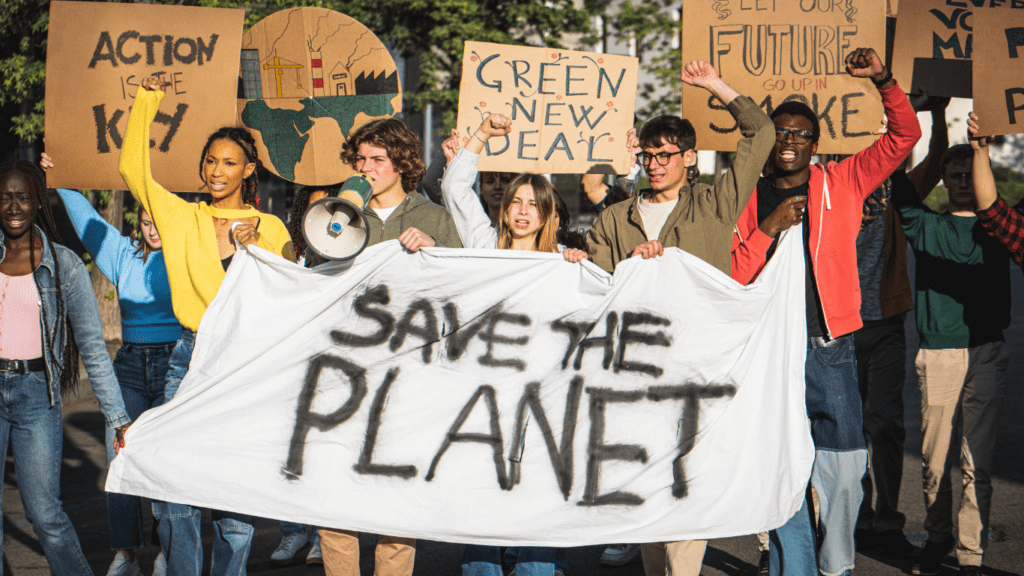As an avid hiker, I’ve witnessed firsthand the impact of climate change on our beloved trails. The shifting weather patterns, melting glaciers, and increasing wildfires are not just distant threats but realities reshaping the landscapes we cherish. In this article, I’ll delve into how these environmental changes are affecting some of the most popular hiking trails around the world.
From the iconic Appalachian Trail to the breathtaking Inca Trail, no trail is immune to the consequences of a warming planet. Erosion, extreme weather events, and habitat loss are just a few ways in which climate change is altering the very essence of these once-pristine paths. Join me as we explore the intersection of nature, adventure, and environmental stewardship in the face of this global challenge.
Impact of Climate Change on Hiking Trails
Climate change is dramatically altering the landscapes of popular hiking trails worldwide. The shifting weather patterns, melting glaciers, and increasing wildfires are transforming these iconic trails into areas of ecological concern. From the Appalachian Trail to the Inca Trail, no hiking path remains untouched by the effects of our warming planet.
Erosion is becoming rampant on these once-pristine trails due to the changing climate. Extreme weather events, such as heavy rainfall and intense storms, are causing significant damage to the trails’ infrastructure and surrounding ecosystems. Additionally, habitat loss is a growing issue, with plant and animal species facing displacement and extinction.
As a hiker and nature enthusiast, it’s essential to recognize the urgent need for environmental stewardship in the face of these challenges. By understanding how climate change is impacting hiking trails, we can advocate for sustainable practices and conservation efforts to preserve these beloved natural spaces for future generations.
Popular Hiking Trails at Risk
As an avid hiker, I’m deeply concerned about the impact of climate change on some of the most beloved hiking trails around the world. Let’s explore how these environmental changes are putting iconic trails at risk and threatening the very ecosystems they traverse.
- Trail 1: Appalachian Trail
The Appalachian Trail, stretching over 2,000 miles through the eastern United States, is facing significant challenges due to climate change. Warmer temperatures are leading to increased erosion along the trail, affecting not only the path itself but also nearby flora and fauna. Additionally, more frequent and severe storms are causing trail damage and hindering conservation efforts. - Trail 2: Inca Trail
The Inca Trail in Peru, leading to the ancient Machu Picchu ruins, is another trail grappling with the consequences of climate change. As temperatures rise, the delicate Andean ecosystem that the trail passes through is under threat. Melting glaciers and altered rainfall patterns are jeopardizing the availability of water sources along the trail, impacting both hikers and the biodiversity of the region.
As a responsible hiker, it’s crucial for me to raise awareness about these issues and advocate for sustainable practices to protect these invaluable natural spaces.
Mitigation Strategies for Trail Preservation
In addressing the impact of climate change on popular hiking trails, it is vital to implement effective mitigation strategies to preserve these natural wonders for future generations. By adopting proactive measures, trail managers can mitigate the ongoing environmental challenges caused by climate change and ensure the longevity of these iconic outdoor destinations.
1. Trail Maintenance and Restoration:
Maintaining and restoring hiking trails is essential to combat the effects of climate change. Regular upkeep, including trail rerouting to avoid vulnerable areas prone to erosion, can help mitigate the damage caused by shifting weather patterns. By repairing sections damaged by storms and wildfires promptly, trail maintenance teams play a crucial role in preserving the integrity of these trails.
2. Sustainable Trail Design:
Implementing sustainable trail design practices is key to minimizing the environmental impact of hiking trails. By utilizing erosion-resistant materials, such as gravel or stone, and constructing trails along natural contours to reduce erosion, trail designers can create paths that are more resilient to climate-related challenges. Incorporating drainage features and vegetation buffers further enhances the sustainability of hiking trails.
3. Environmental Education and Awareness:
Educating hikers and visitors about the importance of environmental conservation and responsible outdoor practices is essential for trail preservation. By promoting Leave No Trace principles, emphasizing the significance of packing out trash, and respecting wildlife and vegetation, trail users can contribute to minimizing their environmental footprint. Increased awareness fosters a culture of stewardship and respect for natural habitats along hiking trails.
4. Climate Resilience Planning:
Developing climate resilience plans specific to each hiking trail is critical in preparing for future environmental changes. By conducting risk assessments to identify vulnerable areas, implementing adaptive management strategies, and collaborating with climate experts, trail managers can enhance the resilience of these trails. Anticipating and responding to climate-related impacts proactively is key to safeguarding hiking trails against the challenges posed by a changing climate.
By implementing these mitigation strategies and advocating for sustainable practices, trail stakeholders can work together to preserve the beauty and ecological integrity of popular hiking trails amidst the escalating threats of climate change. Taking proactive steps today ensures that these iconic trails remain accessible and enjoyable for outdoor enthusiasts in the years to come.
Future of Hiking Trails in the Face of Climate Change
Exploring the future of hiking trails in the context of climate change unveils the imperative for proactive measures to safeguard these cherished pathways. As climate change intensifies, the resilience of popular hiking trails becomes increasingly crucial. Embracing sustainable practices and innovative solutions is paramount to preserving these trails for future generations.



 Ashleyen Gurganusoon, the founder of Terra Tactician Tactics, has always had a profound passion for the great outdoors and a deep-rooted belief in the power of nature to inspire and transform lives. With a background steeped in adventure and exploration, Ashleyen launched Terra Tactician Tactics to share her love for nature and to create a platform where outdoor enthusiasts of all levels can find valuable resources, expert advice, and the latest trends in outdoor activities. Her vision is to empower people to embrace the challenges and beauty of the wild, providing them with the knowledge and confidence to venture safely and enjoyably into nature.
Under Ashleyen’s leadership, Terra Tactician Tactics has become a trusted source for outdoor and survival enthusiasts worldwide. Her dedication to curating high-quality content on camping, hiking, backpacking, fishing, hunting, and adventure travel reflects her unwavering commitment to fostering a community that shares her passion for the outdoors. Ashleyen's approach is driven by her desire to help others experience the joys of nature and adventure while prioritizing safety, sustainability, and respect for the environment. Through Terra Tactician Tactics, she continues to inspire countless individuals.
Ashleyen Gurganusoon, the founder of Terra Tactician Tactics, has always had a profound passion for the great outdoors and a deep-rooted belief in the power of nature to inspire and transform lives. With a background steeped in adventure and exploration, Ashleyen launched Terra Tactician Tactics to share her love for nature and to create a platform where outdoor enthusiasts of all levels can find valuable resources, expert advice, and the latest trends in outdoor activities. Her vision is to empower people to embrace the challenges and beauty of the wild, providing them with the knowledge and confidence to venture safely and enjoyably into nature.
Under Ashleyen’s leadership, Terra Tactician Tactics has become a trusted source for outdoor and survival enthusiasts worldwide. Her dedication to curating high-quality content on camping, hiking, backpacking, fishing, hunting, and adventure travel reflects her unwavering commitment to fostering a community that shares her passion for the outdoors. Ashleyen's approach is driven by her desire to help others experience the joys of nature and adventure while prioritizing safety, sustainability, and respect for the environment. Through Terra Tactician Tactics, she continues to inspire countless individuals.